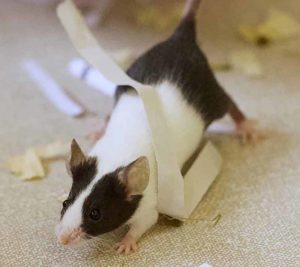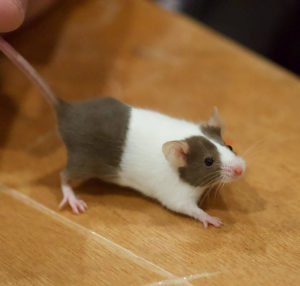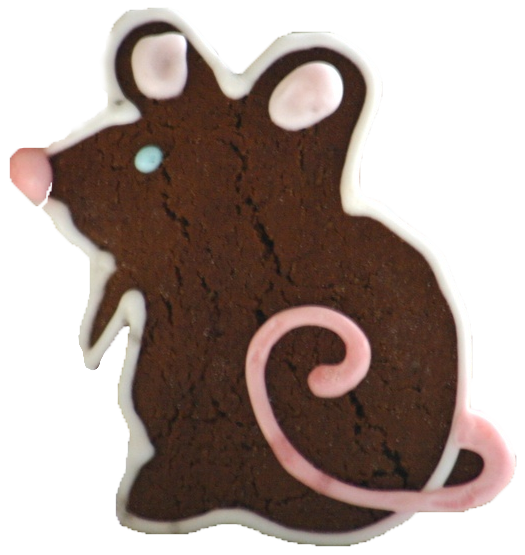As I have mentioned before, producing a well marked Dutch mouse is a real challenge. The more I breed Dutch, and also from what I know and have experienced with other varieties of fancy mice, the more I realise they are the hardest and most challenging of all. Other fanciers might disagree, but if you have not bred Dutch yourself, you will not appreciate how difficult they can be. Comparing them with another marked breed, say for example the Rumpwhite, there are similarities. Both breeds need a very straight demarcation line of colour, in the middle area of their bodies, both on top and underneath. However, the Rumpwhite has solid colour right to the tip of its nose, whereas the Dutch has another area of markings to ‘get right’, namely the head. This entails cheek markings that do not run under the jowls or into whiskers and back behind the ears, there also needs to be a wedged shape divide between the cheek markings, quite a list!!

Black Dutch
Then on top of all these requirements there are the stops, where the colour of the mouse should extend half way along the tail and the back feet. I doubt if any Dutch breeder in history has ever tried to improve the stops on their mice, you have so many more important markings to work on, you just accept whatever stops appear!!
Anyone who reads this and has never bred Dutch, will probably be put off trying. However, if you like a challenge, and gaining a sense of achievement when you produce a winner, then give Dutch a go.
Dutch have always been my favourite variety, I had quite a lot of success with them in the seventies and restarting in 2019, I was able to create my own strain during twenty months of lockdown, when there were no shows. During the last few months a few lilac Dutch have appeared and my ambition this year, is to try and breed a winner, in this colour. I have had winners since last September with cinnamon and chocolate Dutch, and won second prizes with black and agouti Dutch, so lilac is the next colour, although nothing showable at present, they are getting better. Unfortunately the stops on lilac coloured Dutch are impossible to see, but with so many other markings to consider, I am not too concerned.

A Chocolate Dutch mouse. Photoshopped to perfection!
When the Himalayan breed was given a standard in the seventies, it was classed as a marked breed. I remember showing against these mice, which were huge compared to Dutch. After a break of 45 years, when I returned to the Fancy, the Himalayan had been moved to A.O.V. I think there are possibly one or two varieties in the marked section that could follow the Himalayan to A.O.V. A rule could be introduced to state, that a true marked breed should have their markings clearly showing, by 5 days of age. What do other fanciers think? If you don’t like a real challenge, then keep away from Dutch and concentrate on some of the easier breeds of mice!!
 We use cookies to ensure that we give you the best experience on our website. If you continue to use this site we will assume that you are happy with it.
We use cookies to ensure that we give you the best experience on our website. If you continue to use this site we will assume that you are happy with it.
0 Comments